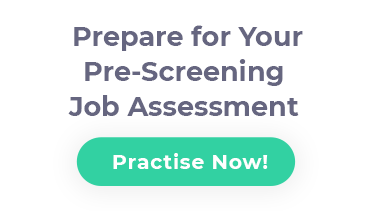FEAST Test Online Preparation & Sample Questions – 2025

What Is the FEAST Test?
The First European Air Traffic Controller Selection Test (FEAST) is a required assessment for all people who wish to become air traffic controllers in many countries, including Canada and much of Europe. If you would like to pursue a career in any of the following areas, you will need to pass the FEAST assessment:
- Area Controllers (IFR): This position requires you to use sophisticated equipment to ensure that multiple aircraft are safe on their routes.
- Flight Service Specialists (AAS): These employees provide pilots with critical information on which runway they should land on and keep remote airports updated with emergency landings and other crucial information.
- Tower Controllers (VFR): Tower controllers ensure that the runways and taxiways run smoothly and that the air space around the airport is orderly.
- Flight Service Specialists (FIC): These specialists keep track of in-flight weather conditions and lead rescue search efforts in flights that go off course.
FEAST Test Sections
The FEAST test consists of four distinct sections that test different skills and abilities. You must pass each exam section before moving on to the next.
The FEAST test sections are:
- FEAST 1 – Cognitive Abilities and English Tests: This first test in the FEAST assessment is 2.5 hours long and will focus on your cognitive abilities and knowledge of the English language.
- FEAST 2 – FEAST DART Test and FEAST Multipass Test: The second section takes about 4 hours to complete and will heavily focus on your ability to multitask.
- FEAST 3 – FEAST Personality Questionnaire (FPQ): This portion takes about 35 to 40 minutes to complete and will ask you to rank phrases or scenarios to measure your personality traits and behavioural characteristics.
- FEAST 4 – Medical Examination: Lastly, each candidate will need to take a medical exam conducted according to national regulations.
FEAST 1 – Cognitive Abilities and English Tests
The first test in the FEAST assessment will focus on your logical reasoning skills, multitasking abilities, attention to detail, spatial orientation, and visual perception. Because the FEAST test is progressive, you must do well in this first section.
Only test takers who score in the top 30% on this first test will advance to the second exam. Results for the FEAST test are scored electronically, so you will know if you have qualified to move on to the next exam immediately.
Which Topics Are Covered in the FEAST 1 Test?
There are a variety of topics that are covered in the FEAST 1 test. Not only are some of the questions challenging, but you will have strict time limits on every question. You will have as little as a couple of seconds to comprehend the information and select your answer to some questions. However, you will receive short breaks throughout the test to allow you to refresh before continuing.
The following are the different assessments that you may encounter on the FEAST 1 exam:
- Number Recall
- Spatial Reasoning
- Correlative Orientation
- Symbols Memorization
- Ball on the Wall
- Conflicting Paths
- Cube Folding
- Gauges Memorization
- Speed Reaction
- Flight Strategy
- Follow the Dot
Remember, you must score at least 70% on this test to advance to the next section.
FEAST Test Free Practice Questions
While the questions themselves may be simple, the time limit on the FEAST 1 test is what makes this exam genuinely challenging. You will have mere seconds to respond to many questions, so you will want to work as quickly and efficiently as possible.
Here are some examples of questions that you may encounter during the FEAST 1 exam.
Speed Reaction Example:
The speed reaction questions will assess your ability to process and act upon the information quickly. Candidates will need excellent reflex skills to do well on this test.
For example, you may see a picture of an avatar holding up two shapes on either side of them. The question may ask you to identify which side of the figure the square is on. Of course, this question is straightforward, and you would easily be able to answer if you know your left from your right and how squares look. However, you will have as little as two seconds to respond to these questions.
Cube Folding Example:
Cube folding questions are difficult because they test your spatial awareness and logical thinking skills. This question will present you with a series of coloured squares in a pattern that could form a cube if folder. Your job is then to answer a question about the folded cube.
Again, this question is not hard to figure out given adequate time, but you will have only 1 minute to answer each question.
Gauges Memorization Example:
You may also encounter gauge memorisation tasks. Here, you will see several gauges and receive only a few seconds to memorise what each gauge is reading. Quick memorisation skills and gauge reading are essential for air traffic controllers, so these skills will be invaluable both during the test and on the job.
How to Prepare for the FEAST Test?
While you will need to have a lot of natural skills such as memorisation, fast response times, and speed reading to do well on this test, there is a lot that you can do to prepare yourself as well.
Online resources such as practice tests are the best way to prepare for the various tasks on the FEAST 1 exam. Because doing well on this exam is crucial to graduating to the next section, you must do everything you can to ensure that you do well.
Practice tests will provide you with more sample questions, such as those described above, to help you understand what to expect on the actual test. Working through these tests will also allow you to practice your timing, which is the most challenging aspect of the exam.
While the content on the test is not overly complex, you will need to practice ahead of time to work on your test-taking speed. Working through sample problems will significantly increase your chances of scoring within the top 30% on the FEAST 1 test.

